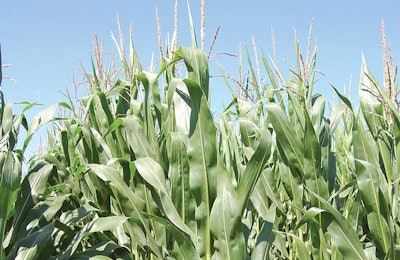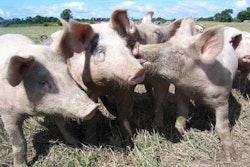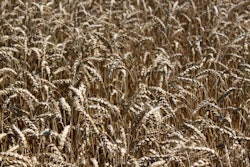
International food production leaders are watching for cereal shortages in China this year as a virulent new pest marches across the region.
Pest control experts and farmers met this week in Bangkok to discuss expectations that the fall armyworm will spread across China this year. Originally native to the Americas, it’s possible that the fall armyworm will be present worldwide within the next two years, according to Allan Hruska, principal technical coordinator for the Food and Agriculture Organization of the United Nations' (FAO) fall armyworm monitoring program. The pest could reduce yields of key feed cereals, especially corn, as it moves into China and other industrialized regions and farmers learn to adapt, Hruska said.
“I don’t think it’s going to be a total loss panic that you sometimes get,” he said. Fall armyworm “can be controlled. It’s a question of adapting to yet one more pest, learning to manage it, and getting enough experience in managing it.”
The FAO believes that the fall armyworm was introduced to central and western Africa in early 2016. Since then, the pest has spread across “virtually all of Sub-Saharan Africa,” according to the organization. As of January 2019, the fall armyworm has been reported in Bangladesh, Myanmar, Sri Lanka, Thailand and China, according to a March 5 report from the FAO.
The fall armyworm is a familiar foe to farmers in the Americas, Hruska said, and doesn’t often impact crop production where appropriate pest control measures are in place. But prior to 2016, the pest’s reach was limited mostly to tropical and subtropical regions in the Americas. In the absence of a coordinated response, the FAO fears the fall armyworm could decimate cereal crops in Africa and Asia, particularly among farmers who rely on the pests’ favorite food — corn — for their own subsistence.
Without control, Hruska said, the fall armyworm typically causes crop losses in the range of 20 percent. When crops are weakened by conditions such as drought, losses can be as high as 70 percent, but Hruska said this outcome is rare.
“Because maize is a basic food crop for hundreds of millions of Africans … there are scenarios where yield loss could push certain farmers over a tipping point to food insecurity,” Hruska said.
That potential outcome, coupled with the need for farmer education, spurred the United Nations to coordinate an international partnership aimed at tracking fall armyworm infestations.
The extent to which the fall armyworm will impact animal feed production isn’t entirely clear, Hruska said. Unlike areas already hit by the pest, China has advance notice of the moths’ approach, and has access to a variety of pest control strategies. But production of some cereals, especially corn, could decline for a year or two while Chinese farmers adapt to managing the new pest, he said.
“China is a place to watch the emerging fall armyworm” to determine how it will impact corn yields as it spreads to other industrialized economies in Asia, the Middle East and Europe, Hruska said.
















